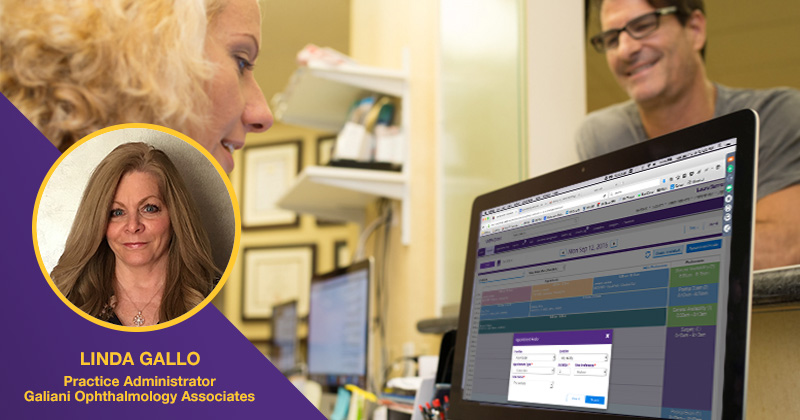Addressing No-show Appointments

How an automated patient reminder system helps one ophthalmology practice focus on delivering high-quality patient care
It wasn’t long ago that our staff was spending untold amounts of time on the phone each day, confirming patient appointments in an effort to head off the dreaded “patient no show.” Although we would call patients 2 days ahead of time to confirm their appointments, many would often still forget, forcing us to follow up — repeatedly — to reschedule.
A Major Revenue Drain
Depending on the physician and scheduled procedure, the cost of each no show could range from $60 to $300 or more per patient. In an ophthalmology practice like ours that sees more than 80 patients a day, our average of about eight missed appointments each day was seriously affecting revenue over the course of a year. It was also taking a toll on staff productivity; following up on each no show took employees away from other important responsibilities, such as patient care. No shows could even adversely affect the patient’s own quality of care. As an ophthalmic practice, it is our responsibility to ensure patients get the best care possible. But, optimal results are only possible when patients keep their appointments and comply with treatments. If your practice is anything like ours, I’m sure you can relate.
A Customizable System
Fortunately, those days are largely in the past, thanks to Patient Reminders, an automated appointment reminder system from Modernizing Medicine. Working together with Modernizing Medicine’s Practice Management (PM) system, Patient Reminders addresses the time-consuming task of making daily confirmation calls, thereby allowing staff to address more important responsibilities, such as patient care.
I reviewed appointment reminder systems from many companies before ultimately choosing Patient Reminders. Not only are we able to customize the system to our specific needs and applications, it works in conjunction with our practice management system and ophthalmology EMR, EMA .
.
Depending on patient preference, for example, the system can be set to call or text reminders. The texting capability is especially useful in this era of never-ending spam calls, when patients increasingly do not answer calls from numbers they don’t recognize. From our experience, our patients see the texted reminder immediately, and it serves as a continuing reminder for as long as it remains on their phones.
We can also send reminders for certain appointment types, but not for others. For example, the system can be set to remind patients of routine appointments, but not for post-op, next-day follow-ups. The frequency of reminders and the timing of each can also be adjusted as necessary over a given period of time. We program in three calls or text messages, depending on the patient’s preference.
The system also provides a daily report of who was called, who was left a message, who hung up on the system, and who didn’t answer. Our system is also intuitive; because it works in conjunction with our practice management system, it continues to issue reminders at regular intervals until it recognizes a new appointment scheduled in the system.
One might think a system that can do all this would require a steep learning curve. However, we found the opposite to be true. Going from initial acquisition to full implementation took about 2 weeks, and even staff with limited computer skills find it user-friendly.
Seamless Integration
Managing an ophthalmology practice can be likened to playing chess: You must move your players to head off challenges, such as no shows, that can keep your practice from concentrating on its most important goal — delivering high-quality patient care.
A reliable, automated patient reminder system can help you avoid those challenges and win the game.
